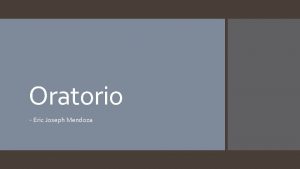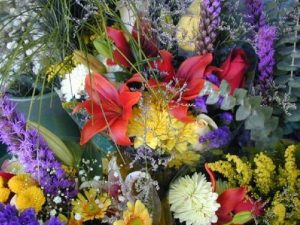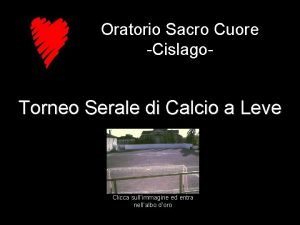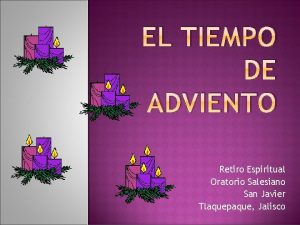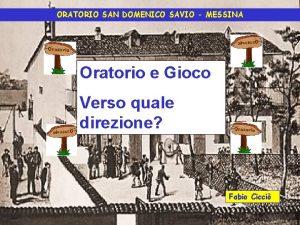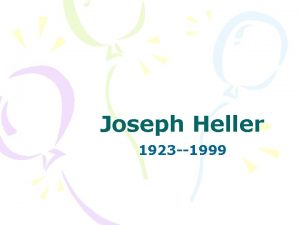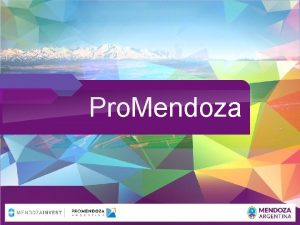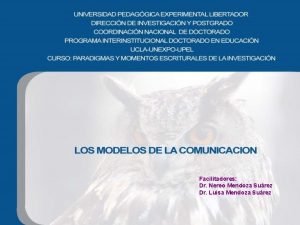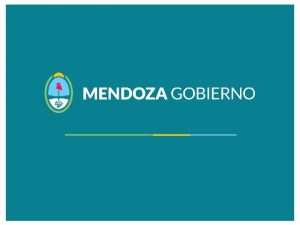Oratorio Eric Joseph Mendoza During the mid1500 s






- Slides: 6

Oratorio - Eric Joseph Mendoza

During the mid-1500 s, an Italian priest by the name of San Filippo Neri founded the Congregation of the Oratory. The room where they held those meetings was called the Oratory; later the term would also refer to the musical performances presented during their meetings. History of Oratorio First oratorio: "Representation of Soul and Body" (La rappresentazione di anima e di corpo) - Emilio del Cavaliere. The "father of the oratorio" title is usually given to the Italian composer Giacomo Carissimi (1605– 1674), who wrote 16 oratorios based on the Old Testament. Carissimi both established the form artistically and gave it the character we perceive it today, as dramatic choral works. Oratorios remained popular in Italy until the 18 th century.

A mass is a Catholic religious ceremony, in which we believe Christ's sacrifice is made present again among us. Portions of the mass into music. Difference between an oratorio and a mass Not all sung, some spoken parts. Latin or Italian Oratorio is a story being told in music (SACRED MUSIC) All words are sung Some instrumental sections Choir Recitative and Aria Very little or non-interaction between characters. Concert pieces – Non-liturgical

Oratorio ≠ Opera !

Haydn was a devout Catholic who often turned to his rosary when he had trouble composing, a practice that he usually found to be effective. He normally began the manuscript of each composition with "in nomine Domini" ("in the name of the Lord") and ended with "Laus Deo" ("praise be to God"). Haydn's Oratorios The Seven Last Words of Our Saviour on the Cross ( Die sieben letzten Worte unseres Erlösers am Kreuze) is an orchestral work commissioned in 1786 for the Good Friday service at Oratorio de la Santa Cueva (Holy Cave Oratory) in Cádiz, Spain. Adapted later as a String quartet and an Oratorio Wrote 2 oratorios: The Creation (1789) and The Seasons (1801)

The return to Vienna in 1795 marked the last turning point in Haydn's career. Haydn wrote his works quickly and in profusion, with frequent deadlines. As a rich man, Haydn now felt that he had the privilege of taking his time and writing for posterity. Haydn's Oratorios Wrote works for public performance. In collaboration with his librettist and mentor Gottfried van Swieten, he composed his two great oratorios, The Creation and The Seasons. Haydn frequently appeared before the public, often leading performances of The Creation and The Seasons for charity benefits. Weighty topics as the meaning of life and the purpose of humankind, and represent an attempt to render the sublime in music. Spent more time in his works both oratorios took him over a year to complete. Haydn once remarked that he had worked on The Creation so long because he wanted it to last.
